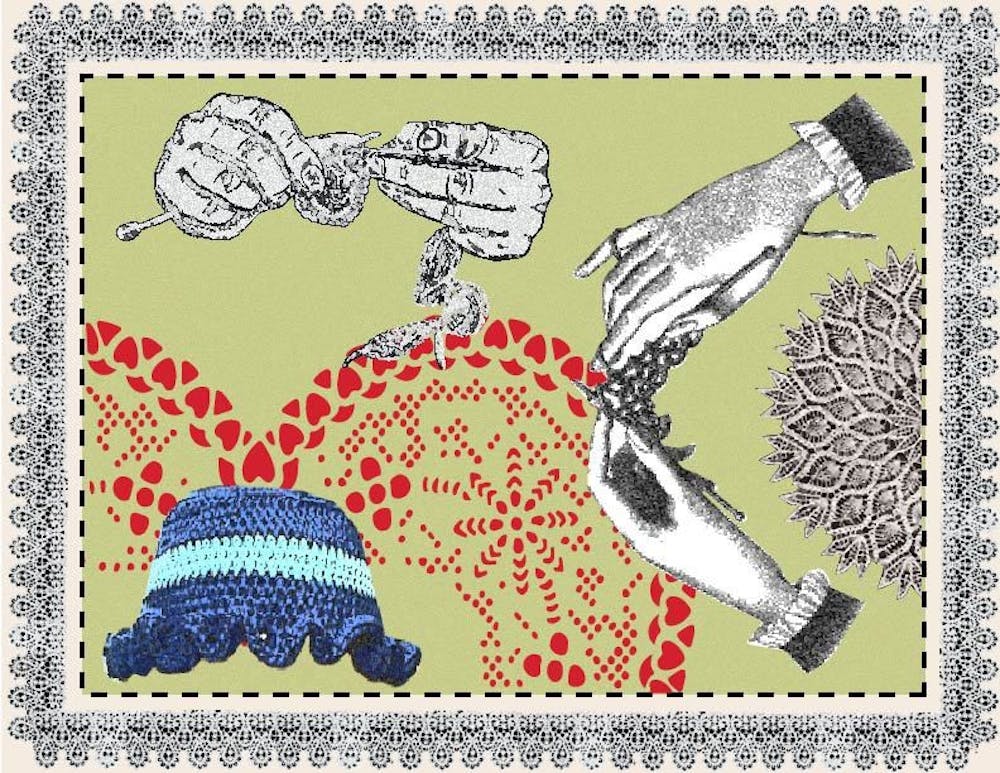This dreary and dreaded pandemic has inspired many to pick up new hobbies and interests. Idle bodies and restless minds have turned to picking up handicrafts to cope. Forms of yarn crafting, like knitting and crocheting, have shot up in popularity as a result.
The accessibility of this long-winded, low-energy, yet productive activity has made it the perfect way to pass time for people who want to keep their hands moving and their minds free.
All you need is yarn, needles (or a crochet hook) and scissors. Both knitting and crocheting are simple enough to pick up after watching a YouTube video or two. After some patience and practice, anyone can be capable of producing a few stitches.
Sophomore Livi Mullenix has recently picked it up after her brother encouraged her to, sparking her interest in the pastime. She even got her friends to pick it up along with her as she feels it's a great hobby to engage in when she wants to just chill with her friends, converse and enjoy each other’s company. “My tolerance for high-energy activities is really low”, she says.
Knitting, crocheting and other textile crafts aren’t just a way to calmly pass time. They’re also a therapeutic creative outlet. Once you get the hang of reading patterns and understanding the construction of the piece, you can develop and customize patterns of your own design.
Free patterns can be found on websites like Ravelry, Lovecrafts, Yarnspirations, Vogue Knitting and even on mainstream social media where people share and sell their unique designs. Essentially, you will be able to make your own wearable art. The potential is infinite.
The therapeutic aspect of yarn crafting comes from the repetitive movement, as it releases serotonin and reduces cortisol, the stress hormone. The motion allows you to focus on the action of your hands and distract from anxieties. For some, it also seems to produce a meditative effect, allowing people to think through their stresses and have their own personal breakthroughs.
Throughout history, knitting pieces for yourself has been a way to show resilience and resistance. People knit during the Great Depression out of necessity as it was less expensive to knit their own things rather than to buy commercially. Today, not only is it less expensive to knit your own garments and accessories, but it is more environmentally friendly than buying knit products commercially. By knitting your own stuff, you refrain from contributing to the ecological damage that corporate industrial textile sweatshops create.
Textile arts also played a large role in second wave feminism in the 1970s. Women purposefully reclaimed the craft and demanded recognition of it as an art form. Textile crafts were long associated with home-making housewives and older women. Yarnwork was feminized, barring men from participating in the craft without threatening their masculinity. What society has forgotten is that men used to dominate this craft, knitting fishing nets so they could catch more fish. Eventually, they applied the same knitting technique to wearable threads, allowing them to knit handmade sweaters. Today, the ageism and the gender stigma associated with knitting is dissolving, making it more acceptable for anyone and everyone to participate.
Next time you find yourself with bits of free time and wishing you had some sort of fun hobby, consider yarnwork, as you might enjoy the rewarding feeling of finishing a knit piece with your own hands.




